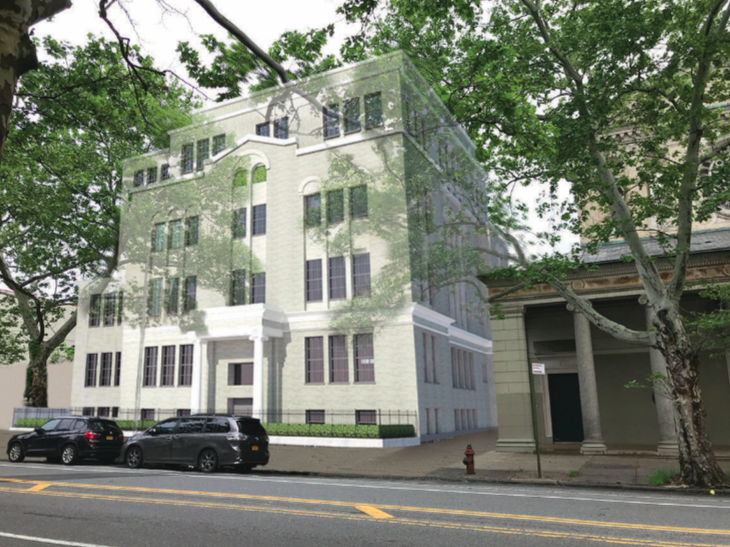From A School To Residences – A Luxury Deal For The Catholic Church

CROWN HEIGHTS – A city’s former rent control board member will convert a Crown Heights landmark property into 46 residential units but there’s no guarantee the apartments will be affordable.
Sarah Williams Willard, former Rent Guidelines Board member — a mayoral-appointed position which sets rents for the city’s rent-regulated apartments — announced Thursday, the plans to convert St. Gregory the Great Catholic Academy into residential housing at 991 St. Johns Pl.

Williams Willard is the co-founder of Workable St. Johns LLC., the company on record as the official lessee who paid $7 million to the St. Gregory the Great Roman Catholic Church to lease the building of its parochial school (closed in 2011) for 49-years with options to extend to 99-years.
The proposed renovation project will add 3 floors to the existing 3-story plus cellar structure and an extension to the west side of the building, converting the school into a 46 unit residential building. Units will range from studios to 3-bedroom apartments and provide 13 parking spots for residents on the grounds of the property.
Developers said no units would be dedicated to affordable housing at this time.
“Profiting off the displacement of the poor doesn’t seem to be the appropriate way for the Catholic church to make money,” said Sarah Lazure, 36, of Crown Heights who attended the Land Use Committee meeting at Community Board 8.
Representatives from the Brooklyn Diocese said the church cannot afford the multi-million dollar repairs without the lease payments.
“Only the money that [goes] into that basket is their fiscal reality,” said Coleen Ceriello of the Brooklyn Diocese who noted the decline in attendance at St. Gregory. Ceriello also said its common practice for the Catholic Church to lease properties when the church is in need.
Williams Willard said the unique project of converting a landmark, a commercial project, doesn’t fit into any specific city program. Initiatives such as the city’s Mandatory inclusionary Housing would require developers to offer a portion of rental units as affordable housing.
Board members lauded the architect’s design and efforts to match the exterior with the pre-existing building but scoffed at the scale and density of the project calling it a “bulky mass.”
“What you’re presenting looks lovely,” said James Ellis of the exterior facade, but objected to the scale “This building is going from a 4-story building to essentially a 7-story building.”
Ellis also added that Crown Heights does not need more market-rate housing but instead affordable and family-size housing.
“It just doesn’t feel right,” he added.
Ultimately the CB8’s land use committee moved to withhold support for the project.
The full board will vote on the committee’s recommendation on Sept. 13. Developers are scheduled for an LPC public hearing on Oct. 4.




